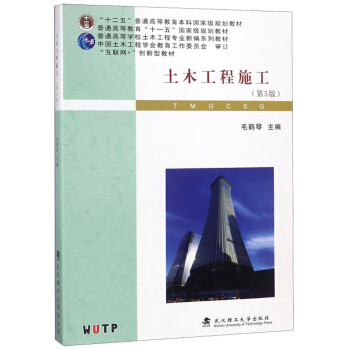- 化学工业出版社
- 9787122244468
- 1-1
- 108142
- 0046173520-1
- 平膜
- B5
- 2016年6月
- 235
- S216.4
- 农业工程
- 本科
本书主要针对农业工程、可再生能源、农村能源工程及环境工程专业类本科生、硕士生和博士生为读者对象,可作为相关国际培训的教材,可作为从事相关科研与教学人员的参考读物,还可作为相关院校的科技英语教材。
Chapter 1 Introduction to Biogas
1.1 Biogas Origin & Nomenclature
1.2 International Biogas History
1.3 Biogas Digester Development in China
1.3.1 First Stage-Luo Guorui Biodigester
1.3.2 Second Stage-Long-distance, Big and Deep Digester
1.3.3 Third Stage-Round, Small and Shallow Digester
1.3.4 Fourth Stage-Mini-size and High-efficiency Digester
1.3.5 Fifth Stage-Commercialized Fiberglass Digester
1.4 Biogas Characteristics
1.4.1 Biogas Components
1.4.2 Biogas Terminologies
1.4.2.1 Total Solids (TS)
1.4.2.2 Volatile Solids (VS)
1.4.2.3 Hydraulic Retention Time (HRT)
1.4.2.4 Gas Production Rate (GPS)
1.4.2.5 Organic Space Loading Rate (OLR)
1.4.2.6 Gas Production Rate of Materials (GPRM)
1.4.2.7 Biochemical Oxygen Demand (BOD)
1.4.2.8 Chemical Oxygen Demand (COD)
1.4.2.9 The Relationship of the Biogas Parameters
Chapter 2 Biochemistry and Microbiology of Biogas Fermentation
2.1 Three Steps of Biogas Fermentation
2.2 Microbes in Three-step of Biogas Fermentation
2.2.1 Biogas Microbes in Nature
2.2.2 Groups and Actions of Non-methane-producing Microbes
2.2.2.1 Variety of Non-methane-producing Microbes
2.2.2.2 Amount of Non-methane-producing Microbes
2.3 Estimation and Calculation of the Amount of Methane Produced from Organic Compounds
2.4 Anaerobic Digestive Process of Complex Organic Compounds
2.4.1 The Degradation of Carbohydrates
2.4.1.1 Anaerobic Degradation of Glucose
2.4.1.2 Anaerobic Degradation of Cellulose
2.4.1.3 The Metabolism of Semi-cellulose, Pectin-gel, Starch, and Cellulose under Anaerobic Conditions
2.4.2 Metabolism of Lipids
2.4.3 Metabolism of Protein
2.5 Fermentative Bacteria
2.5.1 Cellulose-splitting Bacteria
2.5.2 Semi-cellulose-splitting Bacteria
2.5.3 Starch-splitting Bacteria
2.5.4 Protein-splitting Bacteria
2.5.5 Fat-splitting Bacteria
2.6 The Obligate H2-producing Acetogenic Bacteria
2.7 Hydrogen-producing Acetogenic Bacteria in Aqua of Biogas Fermentation
2.7.1 Hydrogen-Producing Acetogenic Bacteria in Biogas Fer- mentation Liquid
2.7.2 Other Specific Bacteria
2.8 Methane-producing Bacteria and Their Classification
2.8.1 Classification and Identification of Methane-producing Bacteria
2.8.1.1 Characteristics of Methane-producing Bacteria
2.8.1.2 The Third Fashion of Life
2.8.1.3 Morphology and Classification of Methane-producing Bacteria
2.8.2 Metabolic Substrates of Methane-producing Bacteria
2.8.3 Theory of Methane Formation
2.8.3.1 Theory of Carbon Dioxide Reduction
2.8.3.2 Theory of Methyl Group Directly Convert to Methane
2.8.3.3 Barker's Hypothesis
2.8.4 Methane Formation Metabolized by Acetate and Formate
2.8.5 Methane Original
2.9 Relationship Between Different Biogas Microbes
Chapter 3 Technology of Biogas Fermentation
3.1 Strict Anaerobic Environment
3.2 Temperature
3.3 pH Value
3.4 Feedstock for Biogas Fermentation
3.4.1 Properties and Classification of Feedstock
3.4.1.1 Nitrogen-rich Raw Material
3.4.1.2 Carbon-rich Raw Material
3.4.2 Properties of Common Feedstock in Gas Production
3.4.2.1 Rate of Gas Production of Feedstock
3.4.2.2 Speed of Gas Production
3.4.3 Proportion of Feedstock
3.4.3.1 Ratio of Carbon and Nitrogen (C/N)
3.4.3.2 Manure: Straw Ratio
3.5 Concentration
3.6 Seeding Materials
3.6.1 Function of Seeding Materials
3.6.2 Enrichment and Culture of Seeding Materials
3.6.3 Source of Seeding Materials
3.6.4 Amount of Seeding Material
3.7 Management
3.7.1 Supplement of Fresh Raw Materials
3.7.2 Frequent Stirring
3.7.3 Keep Fermentative Temperature
3.7.4 Frequent Check of Biogas Devices
3.7.5 Discharging Digesters
3.7.6 Fermentation Inhibitors
3.7.7 Safety & Biogas Appliances
3.8 Inspection and Mainten













